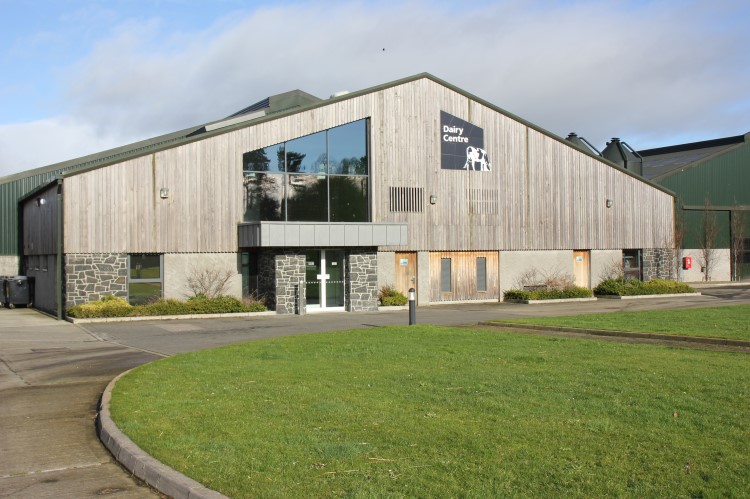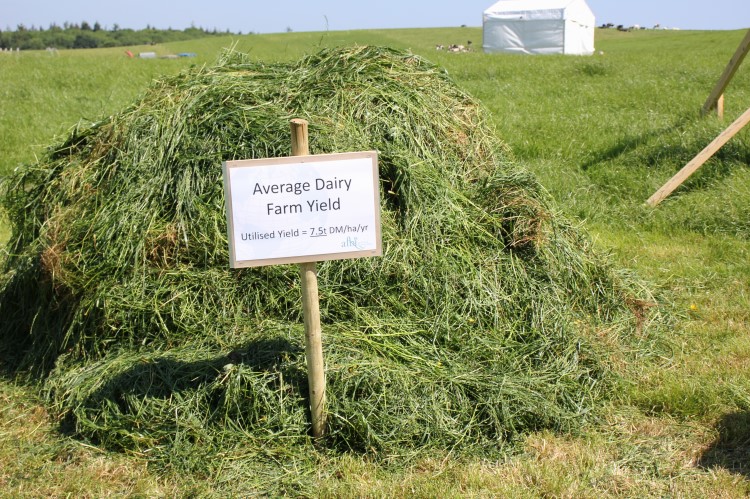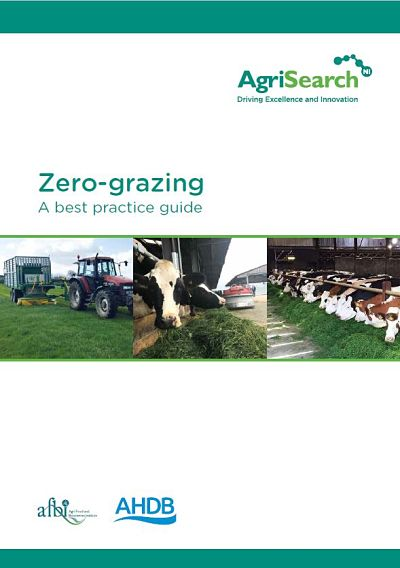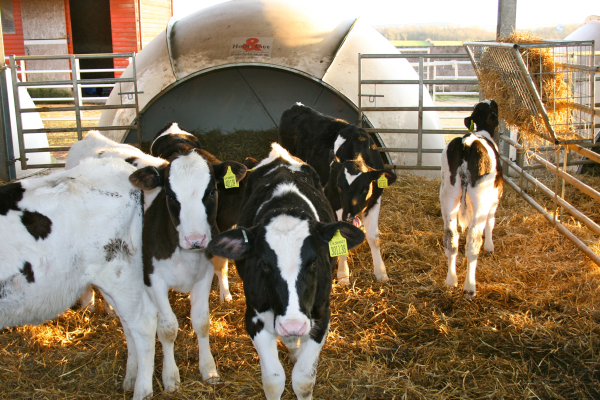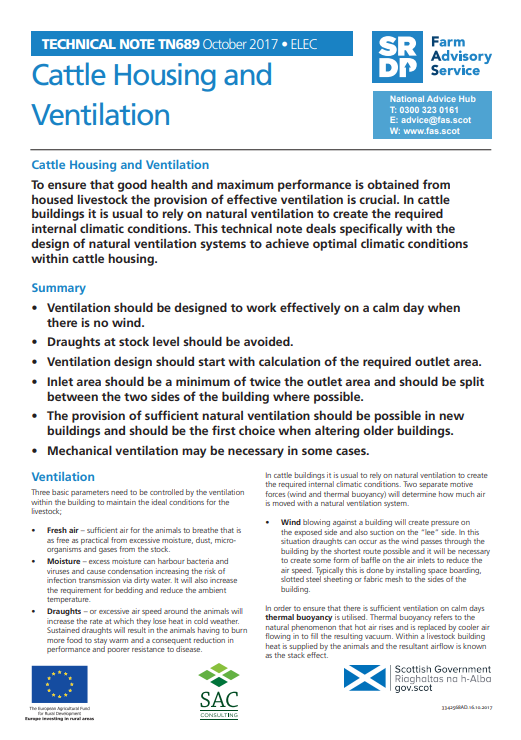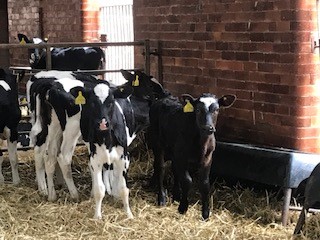Learning from others: Sustainable Dairying in Northern Ireland
The South West Dairy Focus Group travelled to Northern Ireland to visit CAFRE Greenmount and AFBI Hillsborough to learn from research and practical measures adopted on both farms, how they can improve the sustainability of their businesses.
CAFRE Greenmount Dairy Unit
Martin Mullholland, CAFRE's Senior Dairy Researcher, gave us a tour of the dairy complex at Greenmount. The new unit was built in 2013 and the building was designed to ensure that minimal ammonia emissions were released throughout the slurry production, collection and spreading process. The slatted flooring in the sheds has been designed to separate liquid and solids in the slurry before it falls into the tank below, reducing ammonia emissions by as much as 25%. The pictures below show the various flooring types used.
The farm has taken several steps to reduce energy usage in milk cooling, water heating & vacuum pumps. To reduce electricity consumption CAFRE are monitoring the ‘versatile dairy milk cooling system” which uses a continues water supply from a tank to cool the milk, the tepid water flowing out is provided to the cows for drinking. CAFRE estimate that their milk cooling costs have reduced by 74% since they moved to the new unit. They are also monitoring the performance of a heat recovery unit fitted to the milk cooling compressor and variable speed vacuum pumps to develop an online tool to allow farmers to determine the cost-benefit of installing similar systems on their farms.
We also viewed the calving facilities, and calf rearing unit. Calves are housed individually for the first 10days and then group-housed in large igloos with automatic milk feeders. Calves are fed a maximum of 9 litres (150g/litre) of milk per day, the aim is to achieve growth rates of at least 0.8kg/day. The calf accommodation was under a portal frame shed with no sides. There was a very strong emphasis on the ventilation and need to keep the youngstock dry. We visited in early February, it was a crisp morning with a chill in the breeze. Calves were happily lying out in the straw bedding with calf jackets on to regulate their temperature. Very few calves were under cover of the igloos. The prevailing wind was broken by a stack of straw bales. There was still an ample air flow and the system appears to work well in the college farm situation and location.
Agri-Food & Biosciences Unit - AFBI NI
During the afternoon, the group visited AFBI Hillsborough, where the staff, led by Debbie McConnell, Dairy Research Project Leader, gave the group an extensive tour of the research facilities. The group heard from the herd manager about the daily management of the dairy cows, which can be split into anything up to 13 groups for research purposes.
They are milked through a rotary parlour which has the ability to feed 4 different compound feeds to suit research requirements. There is a moderate level of digital dermatitis in the herd and cows are regularly treated with a copper sulphate footbath to control the disease. We then heard from researchers about the main focus of project work which is going on at the moment.
- Improving silage quality – for the last 10 years, the ME of silages in NI has not really improved. Work is ongoing to investigate how this can be improved, for example through multi-cut systems; how high yielding dairy cows respond to higher ME silage, as it can often be difficult to balance these rations to slow down the passage of silage through the rumen.
- 30 NI farms are currently being monitored to gather data on the allocation of concentrates to determine the efficiency of feeding to yield. They hope that by increasing the accuracy of feeding to yield to take account of intakes and energy corrected milk, then concentrate use could be reduced and margin over concentrate increased.
- NI have strict targets to meet on reducing ammonia emissions and one way they are looking to do this is by reducing the protein content of diets. The typical protein content of a diet would be around 18-20% for a high yielding cow, but at AFBI the teams are looking at reducing this to 15% and below by using precision protein nutrition.
- The whole of NI is designated as an NVZ due to eutrophication of waters with phosphorus, 70% of which comes from agriculture. Across NI dairy farms will input 5500t of P, with only 1,540t being excreted in milk. The remainder is wasted, excreted and leached into watercourses. At the moment there is a surplus of 18kg/ha/year of P, the target is 10kg/ha/year! Work is being done to tackle the problem by reducing the use of P fertiliser, improving slurry management & reducing P in cow diets. Studies have been carried out reducing P levels in diets from 0.52% in DM to 0.36% which should no depletion in bone reserves a 20-40% reduction in P excretion & has resulted in the industry adopting low P diets which has a positive financial impact as well.
- A large project has been carried out comparing grazing, silage diets and zero-grazing. It found that milk yields were highest in cows on the zero-grazed diets at 29.5l compared with silage diets at 25.7l and grazing at 27.9l. Grass utilisation was highest in the silage systems at 80% compared with zero-grazing at 76.5% and grazing at 70.4%. Overall the zero-grazing produced the best cow performance over the grazing season but the MOPF was highest in the grazing scenario due to lower costs. On a per ha basis, the zero-grazing produced the highest MOPF per ha due to improved grass growth & utilisation.
- The effect of pasture allocation on the performance of heifers.
- Lastly, we learned about the work going on with the herd being milked on a robotic system, where the trial for summer 2020 will be to assess the performance of adopting a grazing system for the robot herd. The cows will access paddocks close to the shed using a grazeaway system, the success will be measured on grassland utilisation, robot visits per cow and ease of management. AFBI is also about to begin a research project looking at the management of cows in robot herds across NI, which will provide valuable independent information on effective management methods for robot cows.
The group travelled to Northern Ireland in early February for this learning journey into Sustainable Dairying.
Sign up to the FAS newsletter
Receive updates on news, events and publications from Scotland’s Farm Advisory Service


